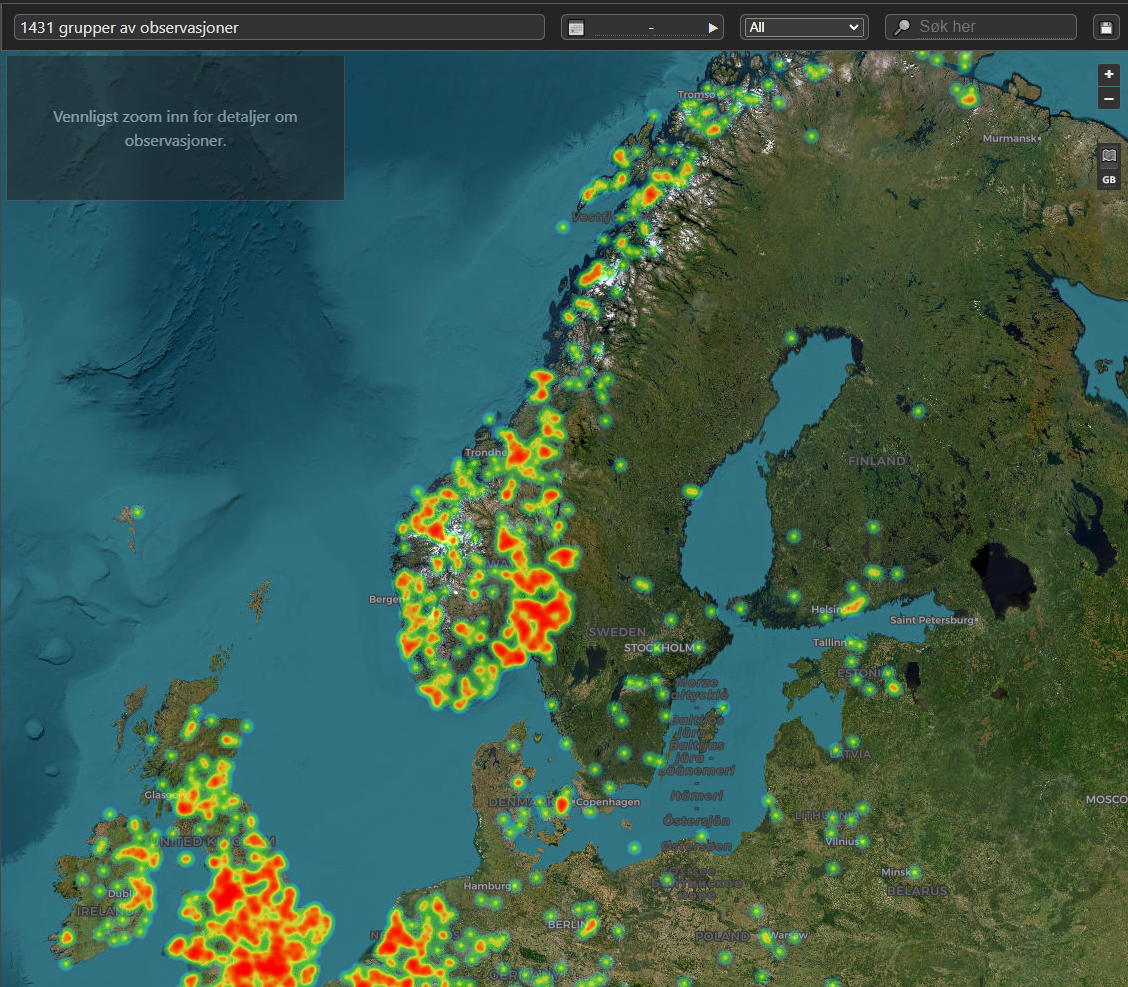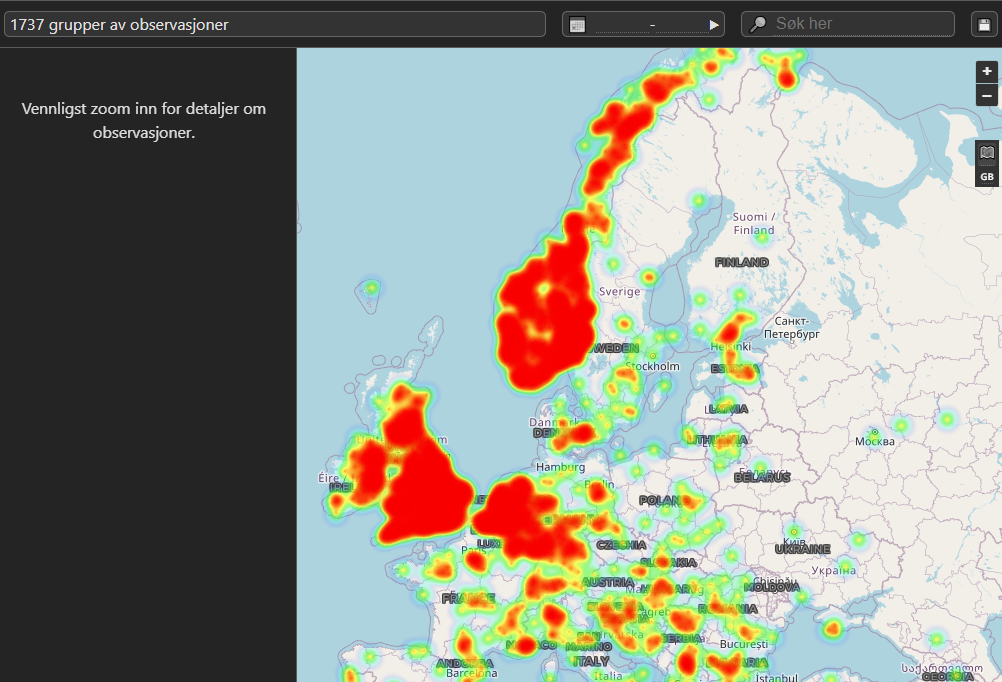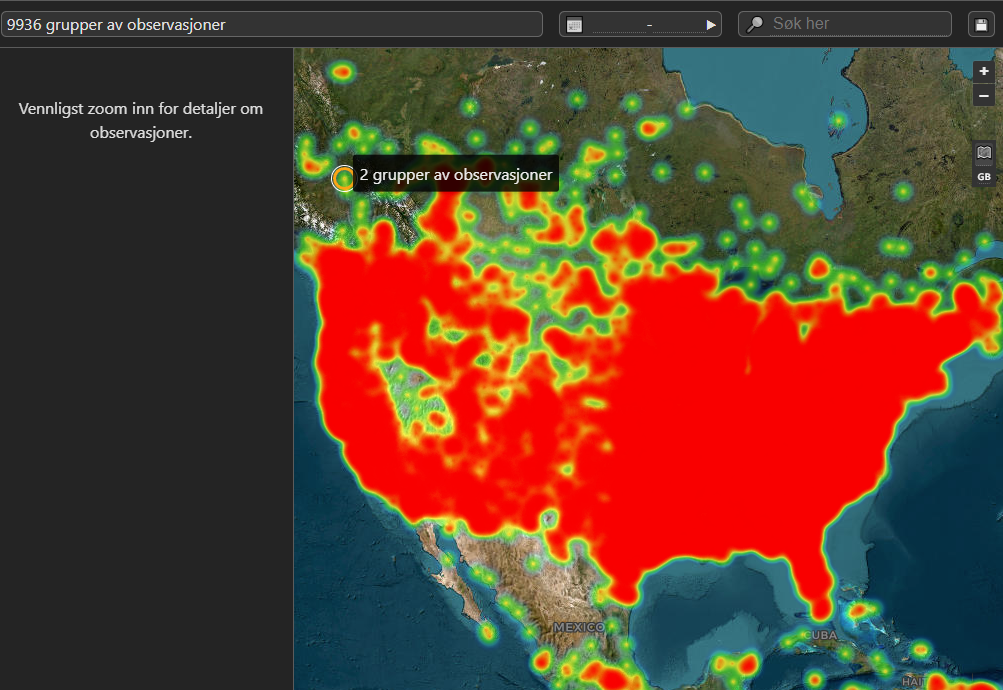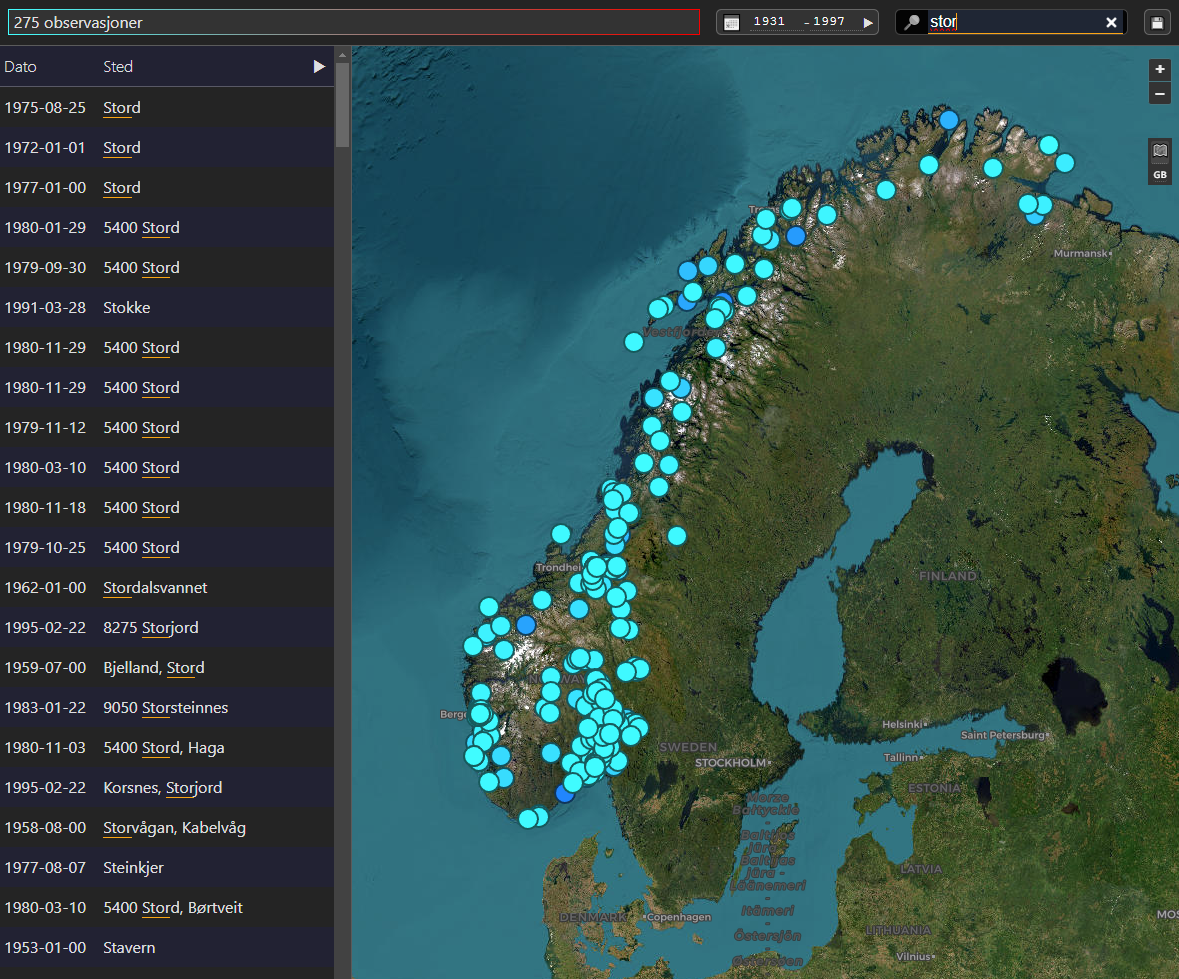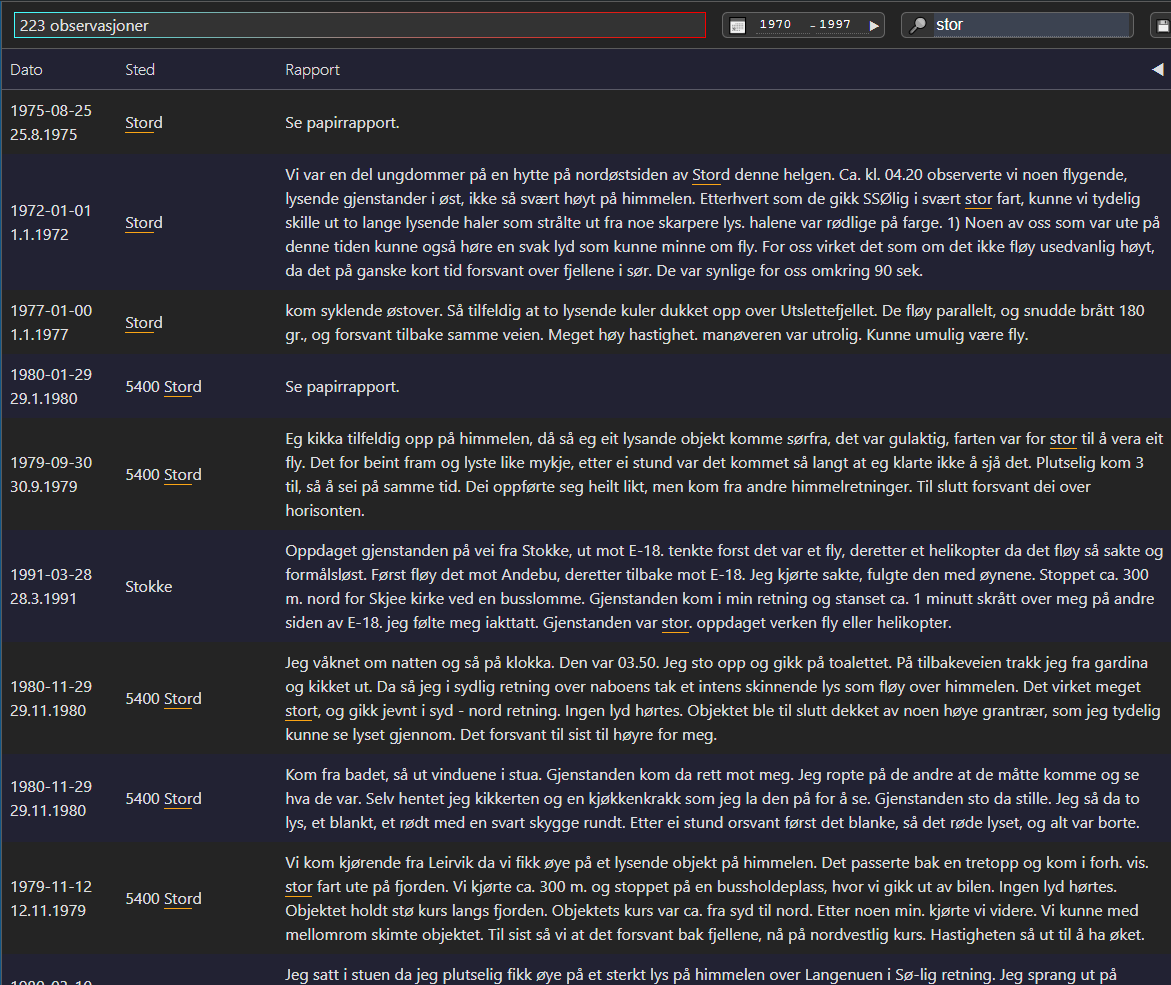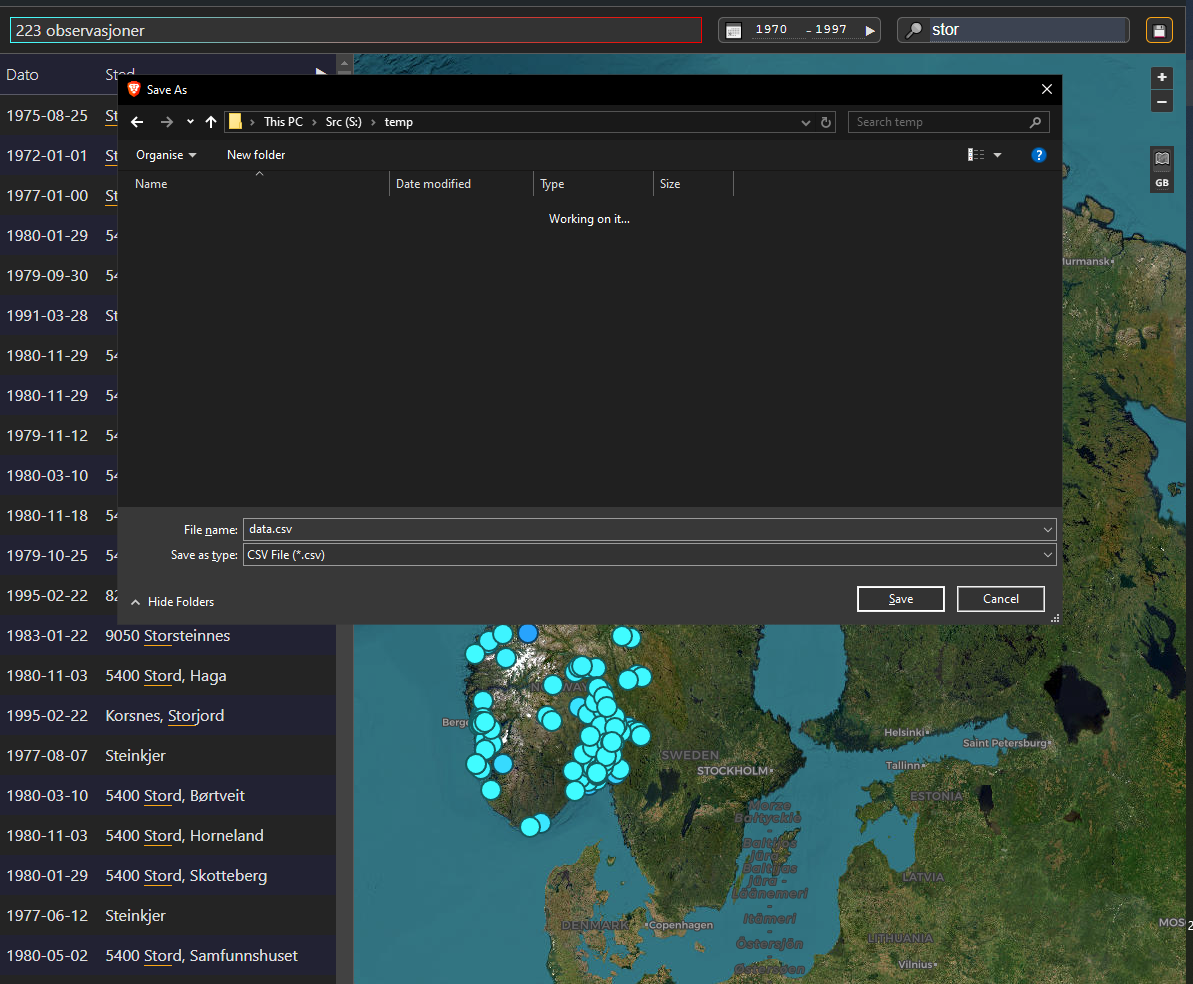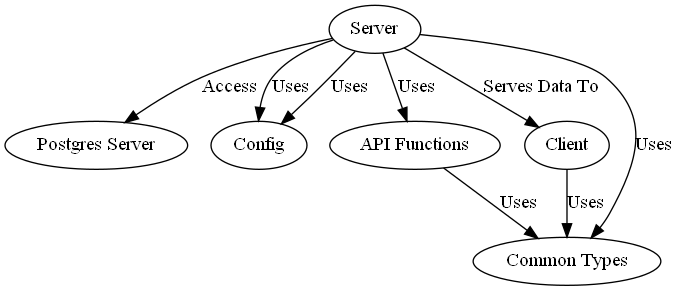- UFOs
- npm Typescript Monorepo
- OpenLayers 9
- React (hooks)
- Redux Toolkit
- ag-grid
- Jest
- Vite
- PostGIS
- Koa
- Serverless functions
- Text search
- Date-range search
- CSV downloads
- Optional server-side clustering
| Name | Default | Description |
|---|---|---|
| PGHOST | 'localhost' | The PostGIS host machine |
| PGPORT | '5432' | The PostGIS host port |
| PGUSER | 'postgres' | PostGIS user name |
| PGPASSWORD | 'password' | PostGIS passphrase |
| UFO_DATABASE | 'ufo' | Name of the database |
| UFO_HTTP_HOST | 'http://localhost' | The Node.js API host |
| UFO_HTTP_PORT | '8080' | The Node.js API port |
psql -c 'CREATE DATABASE ${UFO_DATABASE}'
psql -d ufo < data/merged/ufo-combined.sql
npm install
npm run
npm start
# For production
npm run build -wsAfter bulding you will be left with: the output of the Vite bundler to be hosted by your HTTP server; a Node server script, to host via pm2/etc; serverless functions compatible with Vercel.
This Vite-bundled Typescript React app uses Redux Toolkit to drive the state-based display and search of an OpenLayers map served by PostGIS - probably this version for 64-bit Windows.
Data is fectched for whatever region is visible, and filtered by search terms entered at the top of the window. If zoomed out by a configurable amount, the server clusters the points that represent sightings.
Please fix anything you can or suggest a better way of doing things.
- The Muffon database reports are truncated.
- Much of the Norge UFO data is yet to be processed. Any advice on reading the schema much appreciated.
- The map's minimum zoom level is set to avoid over-taxing the server and the client: hopefully will find time to produce density maps for such zoom levels.
- The heatmap may be slow, so perhaps write a custom loader to load a CSV
Sightings are clustered as a heatmap when zoomed out:
When the map is zoomed in or searched, sightings are displayed on the map and in an abbreviated table:
Selecting a point highlights it:
Clicking the arrow in the head of the abbreviated table opens the full table:
Both tables give access to the details of the full report:
At any time, the visible sightings can be downloaded as a CSV:
When viewing points, clicking the date range calendar icon shows a histogram of the sightings by year:
All state is controlled by the Redux 'slices':
gui: the state of the interfacedetails: the details of a single reportmap: everything needed to query and render results.
The service layer is provided by Koa for simplicity, but could use any Express-type framework that can import routes/middleware.
There is a dump of the current state of the PostGIS databases: see ./data
Configuration of access options via env vars, defaults hard-coded in the global config: PG access tries the usual PG environment varirables, but of course this should (and will) be upgraded to use .env files.
Some work has been done to port to MySQL, but the big update.sql has yet to be tackled.
Location data is stored in EPSG:3857 for speed, with the API accepting EPSG:4326/WGS84 for legibility.
Locations of sightings were semi-manually geocoded from the locations given in the original MS Access database, which was converted to both Postgres and MySQL by a trial version of Exportizer Enterprise. The data/norge/ directory contains those dumps, as well as scripts used to restore relations between the tables, convert the column names to English (since we hope to add Swedish and other data too), as well as cleaning dates and some other values.
Some effort has been put into massaging dates into usable state (197?-13-31 was no use), as well as to geocode the sighting locations to gain latitude and longitude to plot.
As far as I can tell today, table relations (missing in the MDB dump) have been restored.
However, there are still lots of entries such as:
Hvor befant de dem(4,1,1) false
Hvor befant de dem(4,1,2) false
I've had to rename these as part of the move to MYSQL. Perhaps they relate to the hovedtabell querybaerum table?
Some kind soul has done most of the above for the MUFON dataset avaiable through Kaggle. I think this is the same as on GitHub.
See ./data/mufon/ for the ingestion script. The data is not as verbose, but does cover quite a large area. The text had some HTML entities good and bad (soem of tabs and commas, presumably from others' ingestion), which are tidied by the SQL ingestion scripts.
MUFON has much less detail, but much more data.
- Tighten linting.
- Tests.
- Logger transports/etc
- Initialise with map extent rather than center
